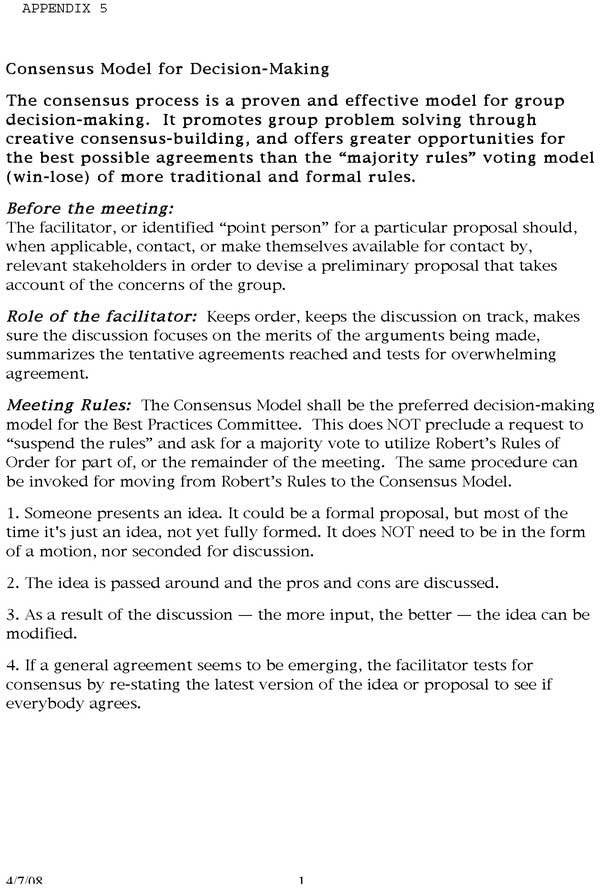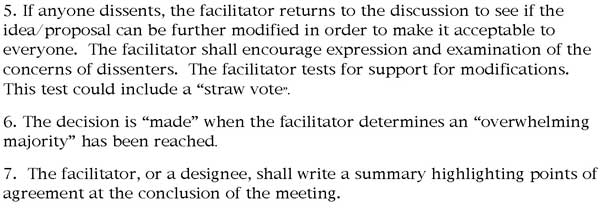For those who are frustrated with the way citizens and public officials interact, YES! Magazine offers alternatives:
Upgrading the Way We Do Politics
…”The term ‘town hall’ conjures up images of townsfolk gathering in some New England hamlet,” writes deliberative democracy scholar Jim Fishkin. But today’s typical “town hall meetings” don’t live up to that tradition. They don’t allow citizens to feel they’ve been truly heard, or to discuss issues in any depth. Like public hearings, town hall meetings tend to largely be gripe sessions, where the most passionate and bold attendees take turns giving three-minute speeches—usually after enduring long speeches from the front of the room…
So how can officials hold more effective open-to-the-public meetings with their constituents? Dozens of effective public engagement techniques have been developed to enable citizens to have authentic, civil, productive discussions at public meetings—even on highly contentious issues. These techniques have names like National Issues Forums, Study Circles, 21st Century Town Meetings, Open Space Technology, and World Cafe, to name just a few…
Skilled facilitation is key to almost all forms of dialogue and deliberation… Skilled facilitators know how to translate conflict and anger into specific interests, needs and concerns so that what’s behind the emotion can actually be understood and addressed…
To involve a broader representation of the public, events should be publicized widely and thoughtfully enough so a variety of people attend (not just the usual suspects). Furthermore, it’s helpful to organize participants into smaller groups (fewer than 10 at a table is ideal) to ensure each person gets the chance to speak and to make it less likely that one individual or interest group will dominate the whole meeting…
Ideally, public officials join in the dialogue as participants, after which they can publicly reflect on some of the things they’ve heard…
Balanced information must be provided about the issue at hand, and a fairly-framed spectrum of possible policy choices can be put on the table for attendees to discuss…
…public input should be requested—and heeded—much earlier in the policy-making process…
Click for the complete article and additional resources
See also:
Video: Special Meeting of the Board of Public Works and the City Council, 8/21/09; Landfill Ballot Question No. 2
We have concerns about the apparent pro-expansion slant of the ballot language that came out of Friday’s meeting…
Video: Presentation of the Final Recommendations of the Best Practices Committee to City Council, 3/5/09
Download the recommendations online or view reference copies at Forbes Library, Lilly Library, and at City Hall in the offices of the City Council, Mayor, and City Clerk.
Research on Best Practices in Other Communities
Best Practices Videos: Dialogue with City Council (12/18) and Public Forum (1/5)
Here are pictures of public comments at the forum as written up by Best Practices Committee member Michael Bardsley (also available as an MS Word document):

Best Practices Committee Presents Draft Recommendations to City Council; Public Meeting Review Form






Best Practices: Pictures and Video from the May 13 Public Forum
Inviting written comments was a good way to let a large number of people express themselves on a wide array of subjects in a relatively short period of time. This and other facilitation techniques at the forum might be useful in other kinds of public meetings as well. The conversation continues at the Best Practices Google Group, open to all.

Wall Street Journal: “How Group Decisions End Up Wrong-Footed”
For committees and other boards to work well, they must be made up of people with differing perspectives and experience who are unafraid to speak their minds, says Richard Larrick, a psychologist at Duke University’s Fuqua School of Business. They must also select and process information effectively and seek to learn systematically from their mistakes.